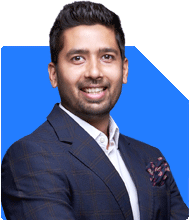Ramalingam Kalirajan |6157 Answers |Ask -Follow
Mutual Funds, Financial Planning Expert - Answered on Jul 18, 2024
He has an MBA in finance from the University of Madras and is a certified financial planner.
He is the director and chief financial planner at Holistic Investment, a Chennai-based firm that offers financial planning and wealth management advice.... more

For the last 7 years I have been investing 1000 rs sip in SBI bluechip fund. The returns arw good, the princioal amout invested is more than doubled. For the past some time I am noticing that the other bluechip funds are giving higher returns than this fund. Should I switch to better fund or continue in this fund?
Current Investment Overview
Fund: SBI Bluechip Fund.
Investment Period: 7 years.
Monthly SIP: Rs. 1,000.
Returns: Principal amount invested has more than doubled.
Appreciations
Discipline: Consistent investing over 7 years shows excellent financial discipline.
Returns: Doubling your principal is a commendable achievement.
Assessment of Current Fund
Performance: While the returns are good, you’ve noticed other bluechip funds performing better recently.
Stability: SBI Bluechip Fund is a well-regarded fund with a history of stable returns.
Considerations for Switching Funds
Performance Comparison
Past Performance: Look at the performance of other bluechip funds over similar periods.
Consistency: Check if the outperformance is consistent over multiple timeframes (1 year, 3 years, 5 years).
Fund Manager and Strategy
Fund Manager: Consider the experience and track record of the fund managers.
Investment Strategy: Review the investment strategy and sector allocations of the funds.
Expense Ratio
Costs: Compare the expense ratios of your current fund and potential new funds. Lower expense ratios can contribute to better net returns.
Benefits of Staying with SBI Bluechip Fund
Stability: The fund has shown stability over the long term.
Past Performance: Your current fund has already provided good returns.
Transaction Costs: Switching funds may incur transaction costs and exit loads.
Benefits of Switching to Another Bluechip Fund
Potential for Higher Returns: Other funds may offer better returns based on current market conditions.
Diversification: Switching can offer a chance to diversify your investment within the bluechip category.
Suggested Approach
Stay Invested with Regular Reviews
Monitor Performance: Continue investing in SBI Bluechip Fund while monitoring its performance against peers.
Periodic Review: Conduct a detailed review every 6-12 months. Adjust if the performance consistently lags behind other funds.
Partial Switch
Diversify: Consider starting a new SIP in another high-performing bluechip fund while maintaining your current investment.
Evaluate: This way, you can benefit from diversification and evaluate the performance of the new fund.
Final Insights
Patience: Long-term investing requires patience. Short-term performance fluctuations are normal.
Balanced Decision: Make a balanced decision based on long-term goals, not just short-term returns.
Consult a CFP: For a personalized strategy, consulting a Certified Financial Planner can provide valuable insights.
Best Regards,
K. Ramalingam, MBA, CFP,
Chief Financial Planner,
www.holisticinvestment.in
You may like to see similar questions and answers below
Ulhas Joshi |272 Answers |Ask -Follow
Mutual Fund Expert - Answered on Jul 04, 2023
Kirtan A Shah |77 Answers |Ask -Follow
MF Expert, Financial Planner - Answered on Nov 01, 2023
Ramalingam Kalirajan |6157 Answers |Ask -Follow
Mutual Funds, Financial Planning Expert - Answered on Apr 23, 2024
Ramalingam Kalirajan |6157 Answers |Ask -Follow
Mutual Funds, Financial Planning Expert - Answered on Apr 26, 2024
Ramalingam Kalirajan |6157 Answers |Ask -Follow
Mutual Funds, Financial Planning Expert - Answered on May 16, 2024
Ramalingam Kalirajan |6157 Answers |Ask -Follow
Mutual Funds, Financial Planning Expert - Answered on Aug 30, 2024
Ramalingam Kalirajan |6157 Answers |Ask -Follow
Mutual Funds, Financial Planning Expert - Answered on Aug 30, 2024
Ramalingam Kalirajan |6157 Answers |Ask -Follow
Mutual Funds, Financial Planning Expert - Answered on Aug 30, 2024
Ramalingam Kalirajan |6157 Answers |Ask -Follow
Mutual Funds, Financial Planning Expert - Answered on Aug 30, 2024
Ramalingam Kalirajan |6157 Answers |Ask -Follow
Mutual Funds, Financial Planning Expert - Answered on Aug 30, 2024
Ramalingam Kalirajan |6157 Answers |Ask -Follow
Mutual Funds, Financial Planning Expert - Answered on Aug 30, 2024
Ramalingam Kalirajan |6157 Answers |Ask -Follow
Mutual Funds, Financial Planning Expert - Answered on Aug 30, 2024
Samraat Jadhav |1986 Answers |Ask -Follow
Stock Market Expert - Answered on Aug 30, 2024
Samraat Jadhav |1986 Answers |Ask -Follow
Stock Market Expert - Answered on Aug 30, 2024
Samraat Jadhav |1986 Answers |Ask -Follow
Stock Market Expert - Answered on Aug 30, 2024
























